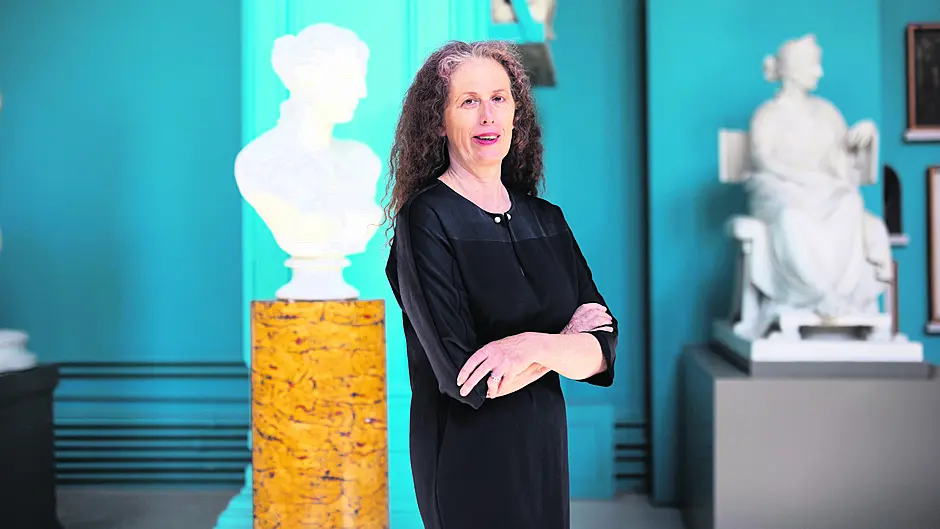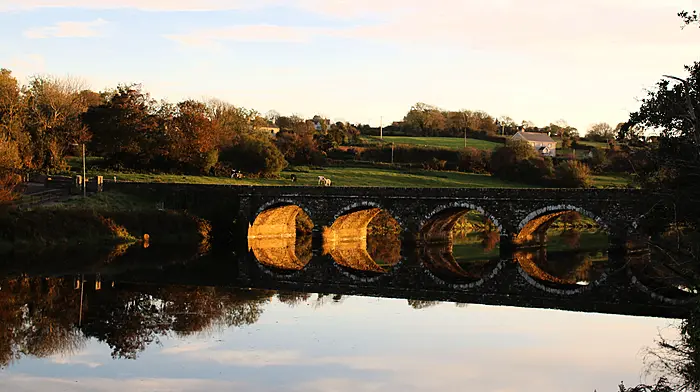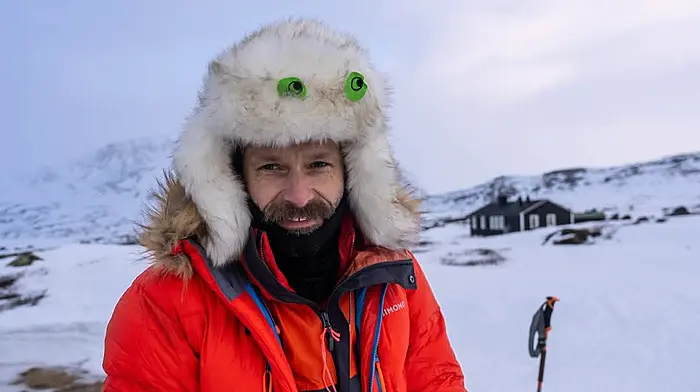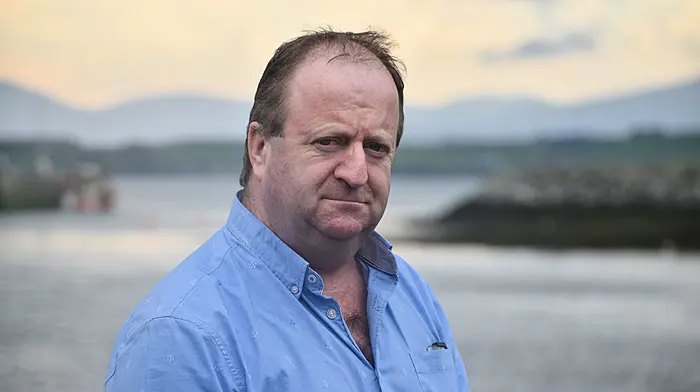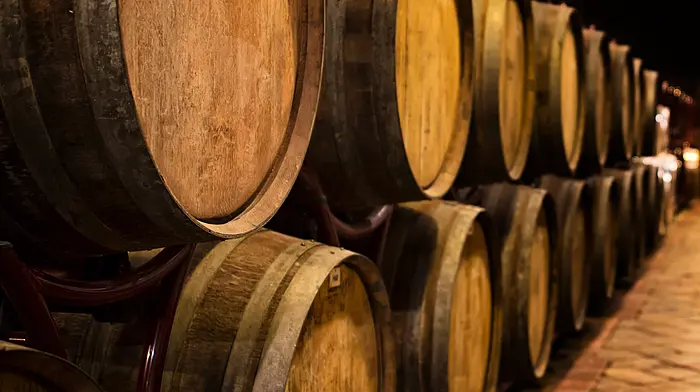One of the unexpected outcomes of the pandemic was the upsurge in interest in art. People started to spend more time browsing in galleries, and so a new interest was born, reports Mary McCarthy
LOCAL man Richard O’Flynn went from selling floors and doors to selling art. A chance conversation with two artists prompted him to open The Yellow Door in Baltimore in July 2018. He asked 30 artists that lived within 30 miles or 30 minutes from his shop to supply three pieces of work to sell. His intention was to trial the gallery for six weeks at the end of that summer and according to Richard, ‘it took off.’
‘My shop was allowed to stay open during the Covid-19 lockdowns. The trend to visit Baltimore was reflective of that in Ireland at the time,’ he says.
‘People who visited here were doing alright. They could not visit the South of France or America, but they could take a car journey to West Cork. At the time, there was a 90-minute restriction on a visit to a pub. Many people were working remotely, saved money, and an interest in art flourished. Many pieces of arts and craft were sold over those lockdown months to brighten people’s homes,’ remembers Richard.
He describes his shop downstairs as a treasure hunt where a discerning eye might spy an interesting booty, including the find of cloth dipped in concrete made with a piece of bog oak.
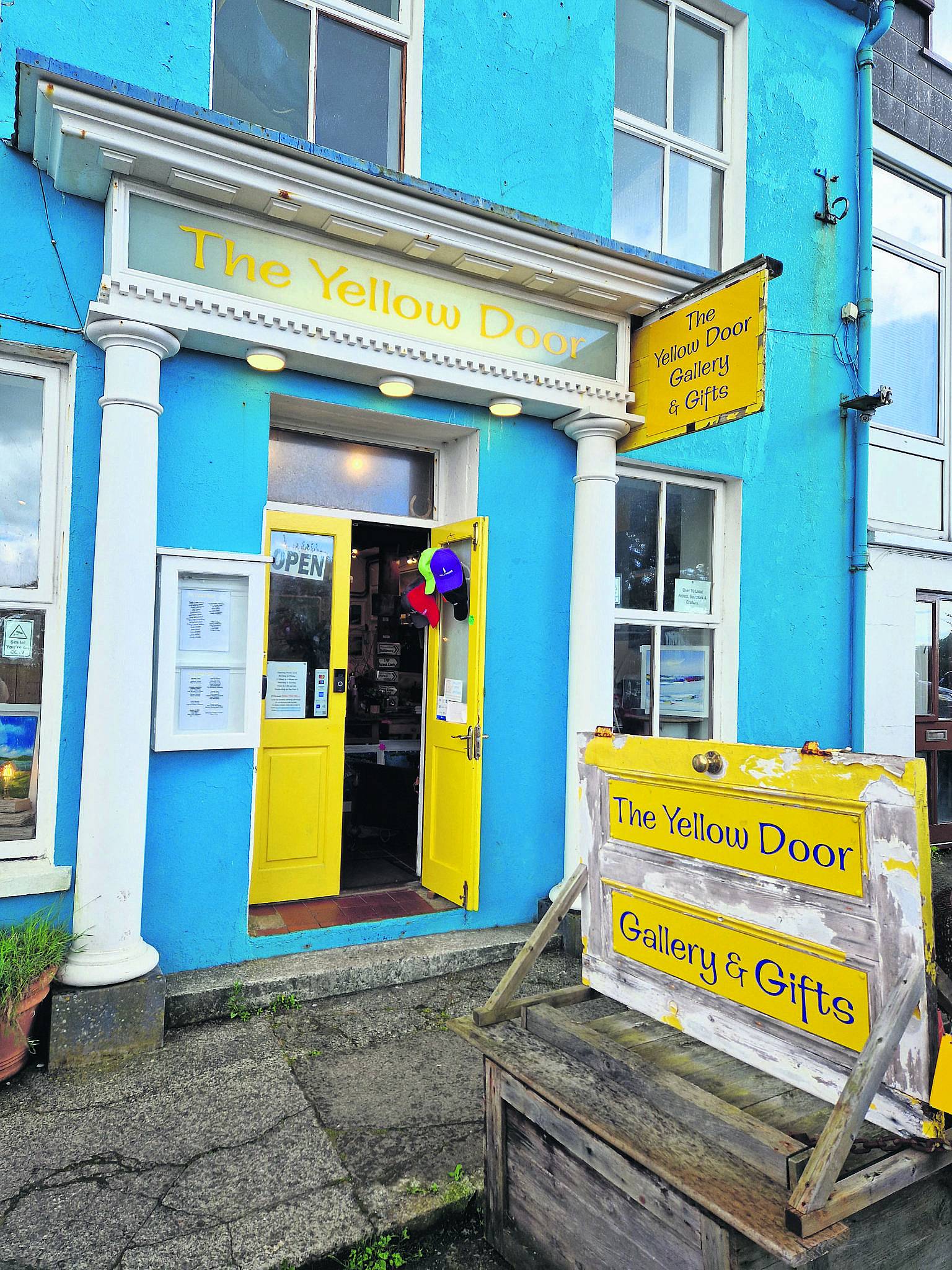 The Yellow Door gallery in Baltimore. (Photo: Mary McCarthy)
The Yellow Door gallery in Baltimore. (Photo: Mary McCarthy)
He carries work by the internationally renowned, Sherkin-based artist Majella O’Neill Collins, whose art he collects off a shrimp boat from the pier in Baltimore. One of her paintings was bought by George Clooney.
He is interested in the story of the artist. Dunmanway-based Kate Wilson worked as a midwife before the pandemic hit and followed her dream of becoming an artist at the end of it. Richard first spotted her paintings of wildflowers in a framer’s workshop and now sells her work in The Yellow Door.
‘Nowadays the shopping trends have gone back to those of pre-pandemic times with a mix of all nationalities from Irish, American and European,’ he recounts.
‘However, the cost of living has had an effect with the price of petrol adding a fuel charge to every product and sales have been impacted. But still, Mother Nature is the best customer when the sun shines in these parts, all local businesses boom. The future is bright.’
Mary McCarthy – no relation of this journalist – grew up in the creative place that is West Cork and was active in the arts scene here before undertaking an MA in arts management in UCD.
 The work of Sherkin-based artist Majella O’Neill Collins. (Photos: Mary McCarthy)
The work of Sherkin-based artist Majella O’Neill Collins. (Photos: Mary McCarthy)
As director of the Crawford Art Gallery in Cork, the Skibbereen woman has witnessed changes in arts culture first hand.
‘During the pandemic the role of the artist was appreciated. There was an awareness that we were coping with a global crisis,’ she said. ‘This was when the opportunities went online and opened the arts to the general public with virtual talks and tours, virtual exhibitions, and the arts programmes from the Crawford (and other institutions) were available online,’ she continued. ‘The general public realised that art was more important than previously thought.’
Artists would have been inspired by the pandemic as well.
‘The visual arts provide a sense of culture. Collections that differ in centuries tell stories and speak about things they are reflecting,’ said Mary.
She believes art appreciation continues to increase in these post-lockdown years. ‘Even though we are living through a cost-of-living crisis, there is a desire to support the creative enterprise.’
She concluded saying that the Crawford has created more spaces to sit down, in response to the HSE’s campaign to get connected, giving opportunity to talk more and linger a little longer and that visitor numbers are back at pre-pandemic levels.

